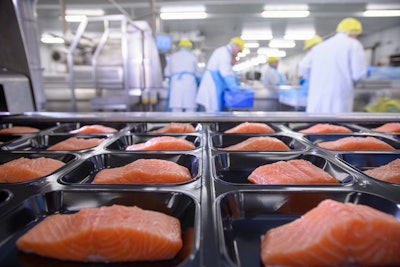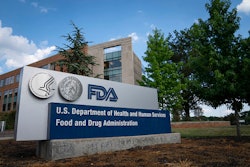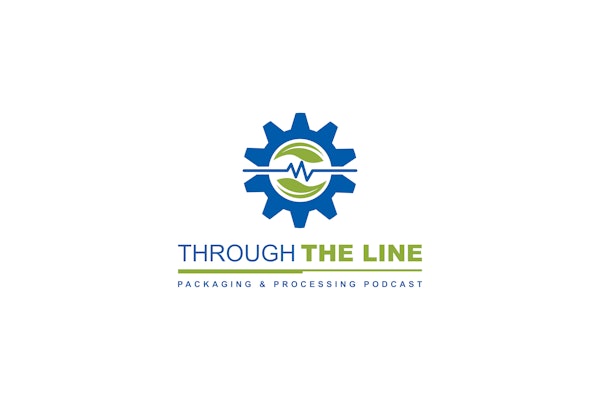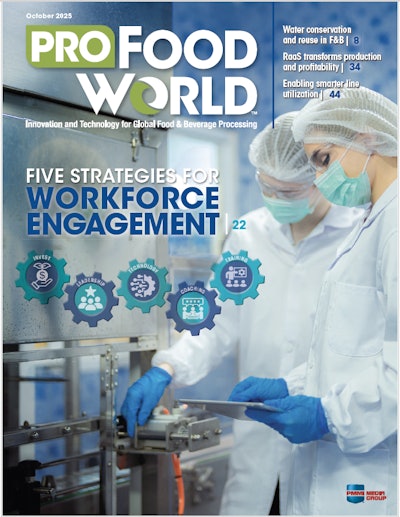The Food and Drug Administration (FDA) is requesting information to address data gaps concerning per- and polyfluoroalkyl substances (PFAS) in seafood.
The FDA aims to enhance understanding of PFAS exposure from seafood to help inform future actions to mitigate dietary risks of these substances, the agency explained in its November notice. It is seeking input from the seafood industry, academia, and state and other federal agencies to address these data gaps.
PFAS are a group of synthetic chemicals known for their persistence in the environment and potential health impacts, including decreased fertility, developmental effects or delays in children, increased risk of some cancers, and other negative effects, according to the Environmental Protection Agency (EPA).
FDA’s recent testing of PFAS in seafood
The FDA currently has no established action levels or tolerances for PFAS, so the agency evaluates PFAS concentrations in food on a case-by-case basis and may conduct a human health assessment depending on the specifics of the case.
Since 2019, the FDA has analyzed 810 food samples, including seafood, to check PFAS concentrations as part of a Total Diet Study. Out of the 810 samples, 23 had relatively low levels of PFAS, all below what the FDA considers a human health concern.
Of those 23 positive samples, though, 19 were seafood samples. This testing shows that seafood may be at a higher risk for environmental PFAS contamination than other types of food, the FDA says.
To expand on these findings, the FDA collected 81 more samples of seafood in 2021 and 2022, targeting commonly consumed varieties like clams, cod, and salmon. The effort was part of a broader strategy to ensure the safety of imported seafood, outlined in the FDA’s 2023 report, “Activities for the Safety of Imported Seafood.”
Based on the results from this study, the FDA determined consumption of a tested sample of canned clams imported from China was likely a human health concern due to concentrations of PFOA, a type of PFAS. This resulted in two voluntary recalls of processed clams imported from China, the FDA says in the notice.
FDA’s goals in its request for information
The agency’s request for information is part of a broader effort to collaborate with other federal entities and stakeholders to address PFAS contamination. This information will help identify seafood types and harvest locations prone to PFAS contamination, inform sampling strategies, and develop potential mitigation measures.
The FDA is requesting data and information in response to a set of specific questions it presents in its notice. The questions cover four unique categories:
- PFAS concentrations in seafood
- These questions aim to identify which specific types of seafood are more prone to PFAS accumulation. While the FDA has tested the most consumed seafoods in the US for PFAS, it says there are data gaps for many other seafood types. The agency also wants to know about harvest locations where samples were collected.
- PFAS concentrations in the environment
- The FDA wants to better understand PFAS concentrations in environmental sources like water and sediment, to help identify harvest areas to avoid.
- PFAS concentrations in processing water
- Processed seafood has potential to be contaminated with PFAS through processing water, so the FDA is seeking data on this occurrence. By identifying the source of contaminated processing water, the agency may be better informed to develop mitigation strategies.
- Mitigation strategies for PFAS in seafood
- The FDA says it wants to learn more about mitigation strategies that may help to reduce or prevent PFAS contamination of seafood. It notes mitigation strategy examples including changing or closing seafood harvest locations if the area is contaminated with PFAS, or processing tissues of seafood that have been determined to not accumulate PFAS.
Participants can submit comments or data until February 18, 2025. Comments and data submissions can be made through the Federal eRulemaking Portal at https://www.regulations.gov, or by mail to Dockets Management Staff (HFA-305), Food and Drug Administration, 5630 Fishers Lane, Rm. 1061, Rockville, MD, 20852.




















